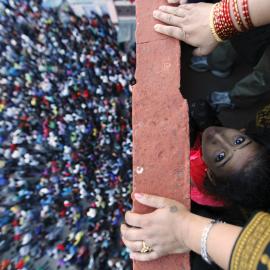In his critical yet sympathetic review of Perry Anderson’s The Indian Ideology (“India and Ideology,” November/December 2013), Pankaj Mishra does not challenge Anderson’s faulty assertion that a “rigid social hierarchy was the basis of [India’s] original democratic stability.”
After India’s independence brought about universal suffrage, the country’s first five general elections, which took place between 1952 and 1972, brought about a massive social revolution. India effectively transitioned from a Brahman raj (upper-caste elite rule) to a Sudra raj (lower-caste rule). These groups constituted some 80 percent of the population; building on existing local caste associations, they participated in electoral politics on a massive scale.
The result was that they elected their own to office. Lower-caste leaders, such as Kumaraswami Kamaraj in Madras (now Chennai), Kapoori Thakur in Bihar, and D. Devaraj Urs in Karnataka, became chief ministers of their home states. And of course, new social policies placed Dalits and other so-called backward classes in government jobs and universities, opening the way to middle-class careers.
India’s “original democratic stability” was thus the result not of a “rigid social hierarchy” but of a remarkable participatory pluralism that gave lower castes access to political power and the status and benefits that came with it.
SUSANNE HOEBER RUDOLPH
William Benton Distinguished Service Professor of Political Science, Emerita, University of Chicago
LLOYD I. RUDOLPH
Professor Emeritus of Political Science, University of Chicago
